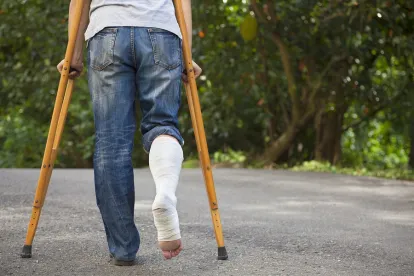FACTS
The plaintiff in this case (Davis) was an employee of the Ford Motor Company. One afternoon, he was directed to spot and bring various railway cars into their respective loading platforms. It was considered a “hot” job because he had to do this in about half the time that it regularly took employees to finish the task. Also, while he was given two other employees to assist him in the operation, neither of them had any experience spotting railway cars or completing this maneuver. Due to his lack of time and lack of experienced help, he got on top of one of the cars to spot instead of taking a position on the ground. While hoping from car to car, he slipped and fell and injured his leg. Doctors arrived at the work scene and rendered medical attention. However, he was not satisfied and filed a medlcal malpractice and negligence action against his employer. The latter claim was actually filed pursuant to the Federal Employers’ Liability Act (FELA). Seeking a reversal of the Appellate Court’s decision, the plaintiff petitioned the Supreme Court for certiorari.
Also, while he was given two other employees to assist him in the operation, neither of them had any experience spotting railway cars or completing this maneuver. Due to his lack of time and lack of experienced help, he got on top of one of the cars to spot instead of taking a position on the ground. While hoping from car to car, he slipped and fell and injured his leg. Doctors arrived at the work scene and rendered medical attention. However, he was not satisfied and filed a medical malpractice and negligence action against his employer. The latter claim was actually filed pursuant to the Federal Employers’ Liability Act (FELA). Seeking a reversal of the Appellate Court’s decision, the plaintiff petitioned the Supreme Court for certiorari and it in fact was granted.
ISSUE
First, should the jury instead of the court have decided if the respondent’s injuries were caused by his inexperience, the instructions given to him, the short time he was to complete those instructions, or some combination of these factors? Second, did the petitioner/plaintiff prove that the doctor his employer provided gave him sufficient and proper care?
ANALYSIS
The appeal mostly revolved around the appropriateness of the district court’s actions. That court took both issues out of the hands of the jury and made decisions about them on its own. To answer whether this was proper for the negligence claim, the Supreme Court started with the following premise:
“The debatable quality of that issue, the fact that fair-minded men might reach different conclusions, emphasize the appropriateness of leaving the question…to the jury. The jury is the tribunal under our legal system to decide that type of issue … as well as issues involving controverted evidence…To withdraw such a question from the jury is to usurp its functions.” Bailey v. Central Vermont R. Co., 319 U. S. 350, 319 U. S. 353-354 (1943).
Thus, the Court found that the traditional role of judge and jury was manipulated in the district court and approved by the Appellate Court. With respect to the medical malpractice claim, the Court noted that these actions have two components: proving a medical standard and proving that a defendant did not meet that medical standard. Then, the court found that the record no evidence of the plaintiff/petitioner attempting to meet this two-prong standard. Thus, though it need not rule on this matter (because the plaintiff/petitioner did not sue the doctor and the employer cannot be liable for the doctor’s malpractice) the Court stated that the plaintiff/petitioner would not be able to succeed on this claim.
HOLDING/RULE
The Court held that the fact-intensive issue of negligence (whether some or no combination of experience, urgency, or directives led to the plaintiff’s injuries) should be decided by the jury. Also, with regard to the issue of whether or not the doctor his employer provided gave him sufficient and proper care, the Court ruled that the petitioner could not prevail as a matter of law because of the lack of foundation formed at trial.
BREAKDOWN
Six justices comprised the majority (Warren, Black, Frankfurter, Douglas, Clark, Brennan, and Stewart) and two (Harlan and Whittaker).
CONSEQUENCES
This case is consequential because it crystallizes the role of the judge and jury at trial. Furthermore, it is a good example of the Supreme Court chastises the former when it oversteps its proper bounds. Finally, it also signifies that with important cases like railroad incidents, judges will not be able to short-circuit trials and more sympathetic juries should be able to hear and decide them.



 />i
/>i
